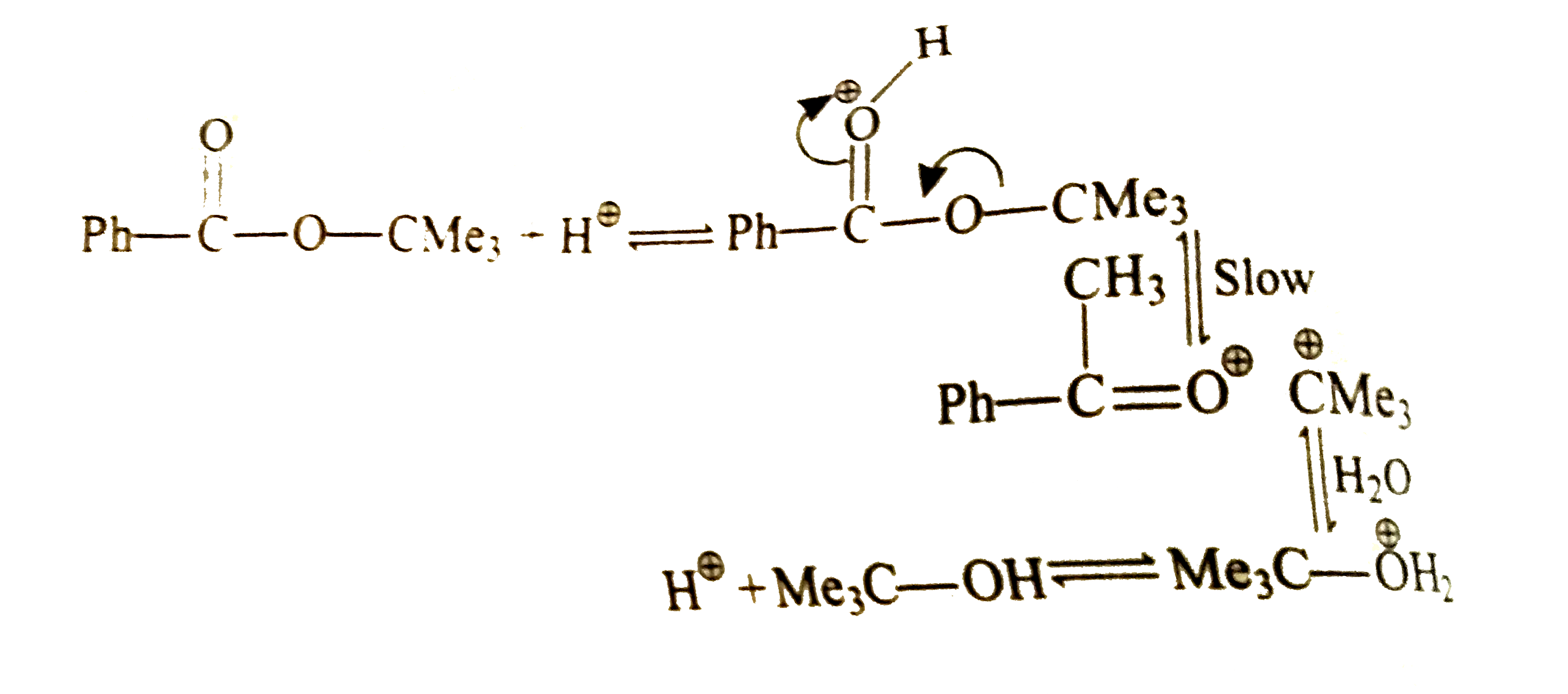Column (I)Column (II)(a)H3C−O||C−O−CH2CH3H⊕/H2O−−−−−→P. Bimolecular(b)H3C−O||C−O−CPh3H⊕/H2O−−−−−→Q. Unimolecular(c)Ph−Ph∣C∣Ph−O||C−O−CH3H⊕/H2O−−−−−→R. Alkyl cleavege(d)CH3CH2−O||C−O−CH3ΘOH/H2O−−−−−→S. Acyl cleavage
The correct Answer is:A, B, C, D
Topper's Solved these Questions
- CABOXYLIC ACIDS AND ITS DERIVATIVESBOOK - HIMANSHU PANDEYCHAPTER - CABOXYLIC ACIDS AND ITS DERIVATIVESEXERCISE - Integer Answer Type Problems
7 Videos
- CABOXYLIC ACIDS AND ITS DERIVATIVESBOOK - HIMANSHU PANDEYCHAPTER - CABOXYLIC ACIDS AND ITS DERIVATIVESEXERCISE - Subjective Type Problems
8 Videos
- CABOXYLIC ACIDS AND ITS DERIVATIVESBOOK - HIMANSHU PANDEYCHAPTER - CABOXYLIC ACIDS AND ITS DERIVATIVESEXERCISE - Linked Comprehension Type (Q.26 To Q.27)
2 Videos
- BIOMOLECULESBOOK - HIMANSHU PANDEYCHAPTER - BIOMOLECULESEXERCISE - Match The Column
6 Videos
- CARBONYL COMPOUNDSBOOK - HIMANSHU PANDEYCHAPTER - CARBONYL COMPOUNDSEXERCISE - Subjective Type Problems
10 Videos
Similar Questions
Column (I)Column (II)(a)PhMgBr+CO2H⊕3O−−→P.Nuc≤oϕlicadditionreaction(b)CH3MgBr+Ph−O∣∣C−ClH⊕3O−−→Q.Nuc≤oϕlicadditionelim∈ationreaction(c)CH3MgBr+Ph−O∣∣C−OC2H5H⊕3O−−→R.Ph−OH∣C∣CH3−CH3(d)PhMgBr+CH3−O∣∣C−CH3H⊕3O−−→S.PhCOOH
View SolutionColumn (I)Column (II)CompoundspKa values(a) H3C−O∣∣C−CH2−O∣∣C−OEtP. 3.5(b) H3C−O∣∣C−CH2−O∣∣C−CH3Q. 10.7(c) H−O∣∣C−CH2−O∣∣C−HR. 8.9(d) H−O∣∣C−CH2−O∣∣N→OS. 0.4
View Solution
Knowledge Check
H3C−O||C−O−C∣Ph=CH2+H2ONaOH−−−→H⊕3OX+Y
X and Y are:AX is CH3−O||C−O−CH2−PhBY is HCHOCY is H3C−O||C−OHDX is Ph−C||O−CH3H−O∣∣C−O∣∣C−HCH3MgBr(excess)−−−−−−−−−−−→H⊕3O Product :
AH3C−C∣∣O−C∣∣O−HBH3C−C∣OHH−C∣OHH−CH3CH3C−C∣∣O−C∣∣O−CH3DCH2OH∣COOHCH3−O∣∣C−H and CH3−O∣∣C−CH3 is differentiated by :
ATollen'reagentBFehlingCiodoformDNaHSO3
Ph−O∣∣C−O−CPh318H3O⊕−−−→ Product of this reaction is :
View SolutionCh3−O∣∣C−O∣∣C−PhCH3CO3H−−−−−−→ product, Product will be :
View SolutionCH3−O∣∣C−H and Ph−O∣∣C−H can be differentiated by :
View SolutionThe molecules CH3−O∣∣C−CH2−O∣∣C−O−C2H5 and CH3−OH∣C−OH−O∣∣C−O−C2H5 are
View Solution
Choose the correct case of hydrolysis for the following molecules :
(P) CH3−O||C−OCPh3
(Q) CH3−C∣CH3H−O||C−O−CPh3
(R) Ph−C∣CH3H−O||C−O−CPh3
(S) CH3CH2−C∣CH3H−O||C−O−CPh3
View Solution
